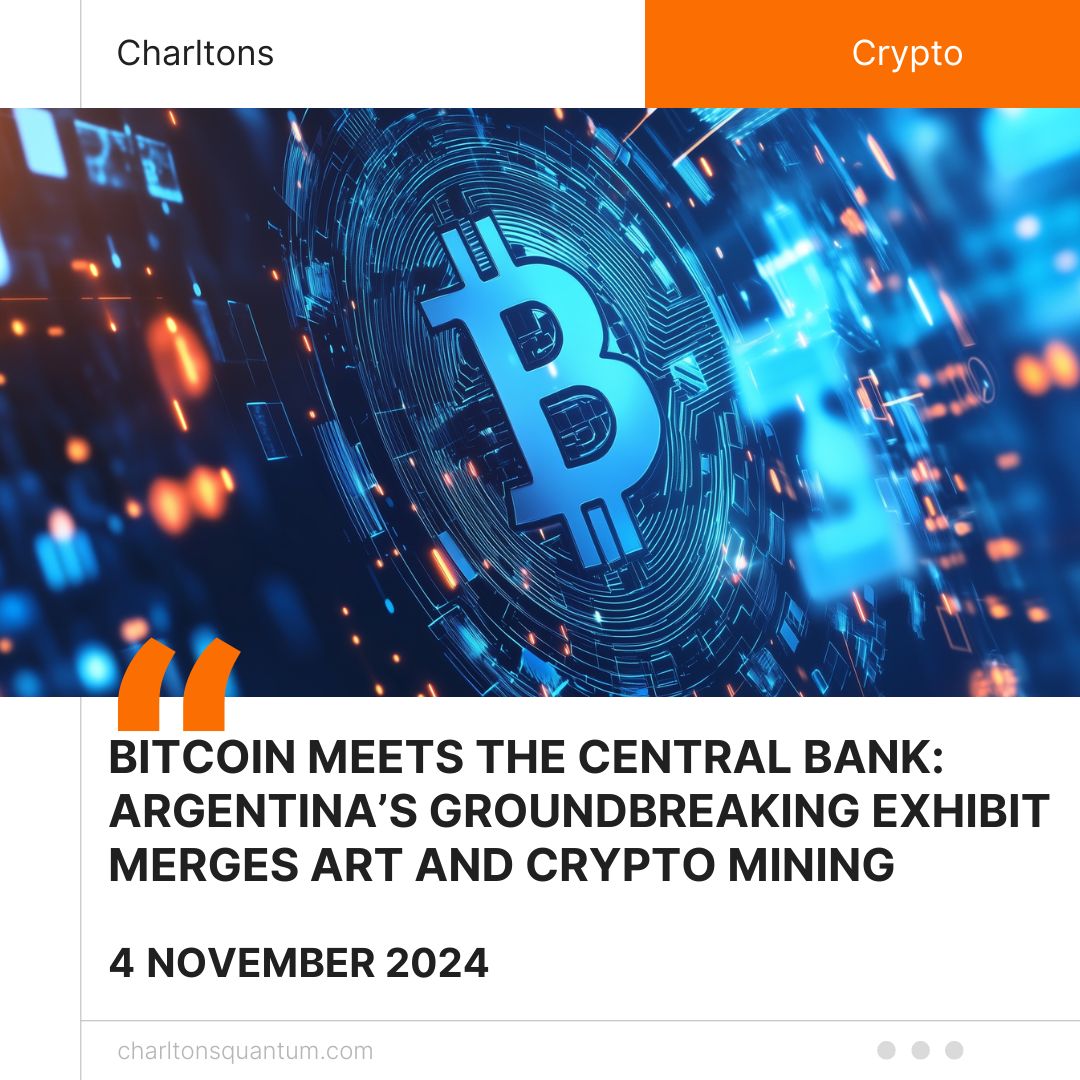
On 31 October 2024, the Central Bank of Argentina (BCRA) held an exhibition at its Historical Museum, bridging the worlds of digital assets and traditional finance through live Bitcoin mining as part of an art display. This exhibit, titled “Art, Artificial Intelligence, and the Future of the Economy,” is a global first for central banks, blending cutting-edge cryptocurrency mining equipment with contemporary art to explore the transformation of money. By daring to showcase decentralized finance within its institution, the BCRA signals a progressive stance, inviting the public to reflect on the future of value as currency moves from physical cash to decentralized, blockchain-driven systems.
The centerpiece of the exhibition is the work of Alberto Echegaray, a digital artist whose installations probe the tension between traditional and digital economies. His piece, “Moneyballs,” encapsulates this shift through spheres filled with shredded banknotes, crafted from decommissioned U.S. dollars and Argentine pesos. These physical remnants of cash stand as a powerful symbol of the fading dominance of paper money in an era increasingly defined by digital and decentralized finance. With operational Bitcoin and Ethereum mining rigs embedded in the exhibit, Echegaray presents the blockchain process in real-time, directly connecting his artwork to the active financial data flows that define today’s crypto economies. This blend of art and technology transforms the exhibition into an immersive experience, challenging viewers to question long-held perceptions of currency and wealth.
The exhibit speaks volumes about the Argentine government’s approach to technology and finance, showcasing an openness to explore decentralized systems within the walls of a traditionally centralized institution. This is a remarkable shift for a central bank, which historically serves as the anchor of centralized financial control. By opening its doors to an art installation that celebrates decentralization, the BCRA signals a willingness to engage with, rather than resist, the changes brought by blockchain and artificial intelligence. Argentina, a country that has faced significant inflation and currency volatility, is uniquely positioned in this regard, as many Argentinians have already turned to cryptocurrencies as an alternative store of value. The government’s support for this exhibit reflects an understanding that the financial landscape is changing, and that embracing technology, rather than sidelining it, may be the key to navigating future economic challenges.
This exhibition also plays a crucial role in the blurring lines between traditional finance and decentralized finance (DeFi), marking a pivotal moment where these once separate worlds intersect. While traditional finance has long relied on centralized structures governed by banks and regulatory bodies, DeFi introduces a distributed model that minimizes intermediaries, empowering individuals to participate directly in financial transactions. By placing cryptocurrency mining rigs in the central bank’s museum, the BCRA acknowledges the rising significance of decentralized finance and its potential to reshape economies. This gesture reflects a growing global trend: governments and financial institutions worldwide are re-evaluating their stance on blockchain technologies, recognizing that DeFi’s transparent, open-access model holds benefits that could complement or even transform traditional financial systems. With central banks in other regions, such as Europe and the United States, exploring digital currencies and blockchain-backed assets, Argentina’s exhibit contributes to a broader dialogue about the compatibility of DeFi within established economic frameworks.
Globally, this shift is being closely watched, as countries weigh the potential benefits and challenges of integrating DeFi into their existing financial ecosystems. Central banks in several nations are piloting digital currencies, often referred to as central bank digital currencies (CBDCs), which, while technically distinct from cryptocurrencies, represent a nod toward a digital future. Argentina’s pioneering exhibition, showcasing both physical cash and decentralized technology side-by-side, serves as a powerful symbol of this transition. It prompts a conversation about whether traditional financial authorities can coexist and even collaborate with decentralized systems, rather than viewing them solely as competition.
In Argentina’s exhibition, the visitor sees not only the potential of digital economies but also a profound question about the very nature of money in a digital-first world. The BCRA’s willingness to display Bitcoin and Ethereum mining alongside traditional financial symbols challenges viewers to envision a new model for value—one that is less tangible yet deeply interconnected with technology and public participation.





